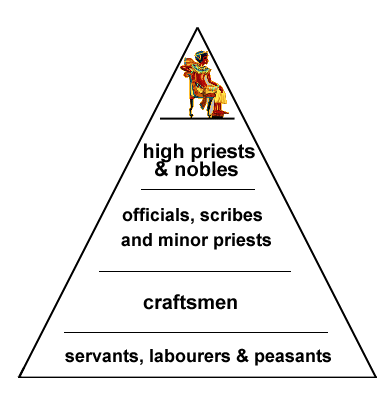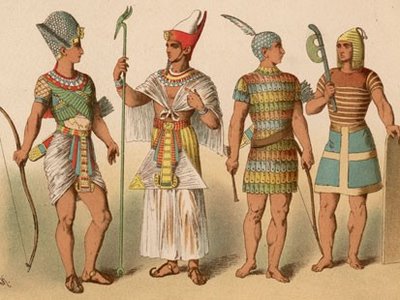The ancient Egypt government was not characterized by a democratic system. Power was concentrated in a single individual- The Pharaoh. He controlled and dominated the country. Pharaoh was considered as the living God has ultimate control over the people and the land. His eldest son was usually his successor.

Egypt had features of theocracy also. Religion was not kept away from the state. Priests and holy men who formed their own social class exercised sufficient influence over the government. They were respected and regarded as an upper class of the society compared with commoners.
The government structure of ancient Egypt involved other officials, including viziers, army commanders, and chief treasurers, minister of public works, and tax collectors, all of whom answered directly to the pharaoh.
The status of a vizier was equivalent to that of a Prime minister. Governors of specific pieces of land were sometimes controlled by the vizier. Court officials and nobles who held high officer helped in the governance.

A strong government and well-organized bureaucracy were the necessity of time. The key areas of administration were the Treasury, the Department of Agriculture, the Ministry of Works, the judiciary and the army. The duties of central government varied over time.
The basic duties included Building royal monuments, controlling civil order, conducting population census, managing industries, collecting taxes, Maintaining army, recording rainfall and water levels of river Nile, enforcing law and punishment etc.
Achieves was a prominent feature of the administrative system. Everything was recorded, wills, conscription lists, tax lists, letters, and trial transcripts.
The government was divided into the central government and provincial government. Both Upper and Lower Egypts had their own governments and rulers. Upper Egypt was divided into 22 districts and Lower Egypt into 20 districts.
Upper and Lower Egypt were eventually united in 3118 BC. The framework of the earlier Ancient Egyptian government included the districts. The districts were called nomes and the governor, or head, of the provincial administration was called a nomarch.
The police force was called Medjay. The police maintained public order. Though Egypt was one of the most peaceful countries, there existed an army. Military recruitment was not always voluntary.
Taxation existed mostly in forms of labor and goods. Taxes were often a burden to the public. Laws were drafted and implemented. The concept of Maat and customs were very important. Doing ‘wrong’ invited public disapproval and disgrace.
Though the general way of governing was consistent in Egyptian history, Egypt Government were often replaced or overthrown due to reasons like invasions, chaos or excessive influence of religion etc.
